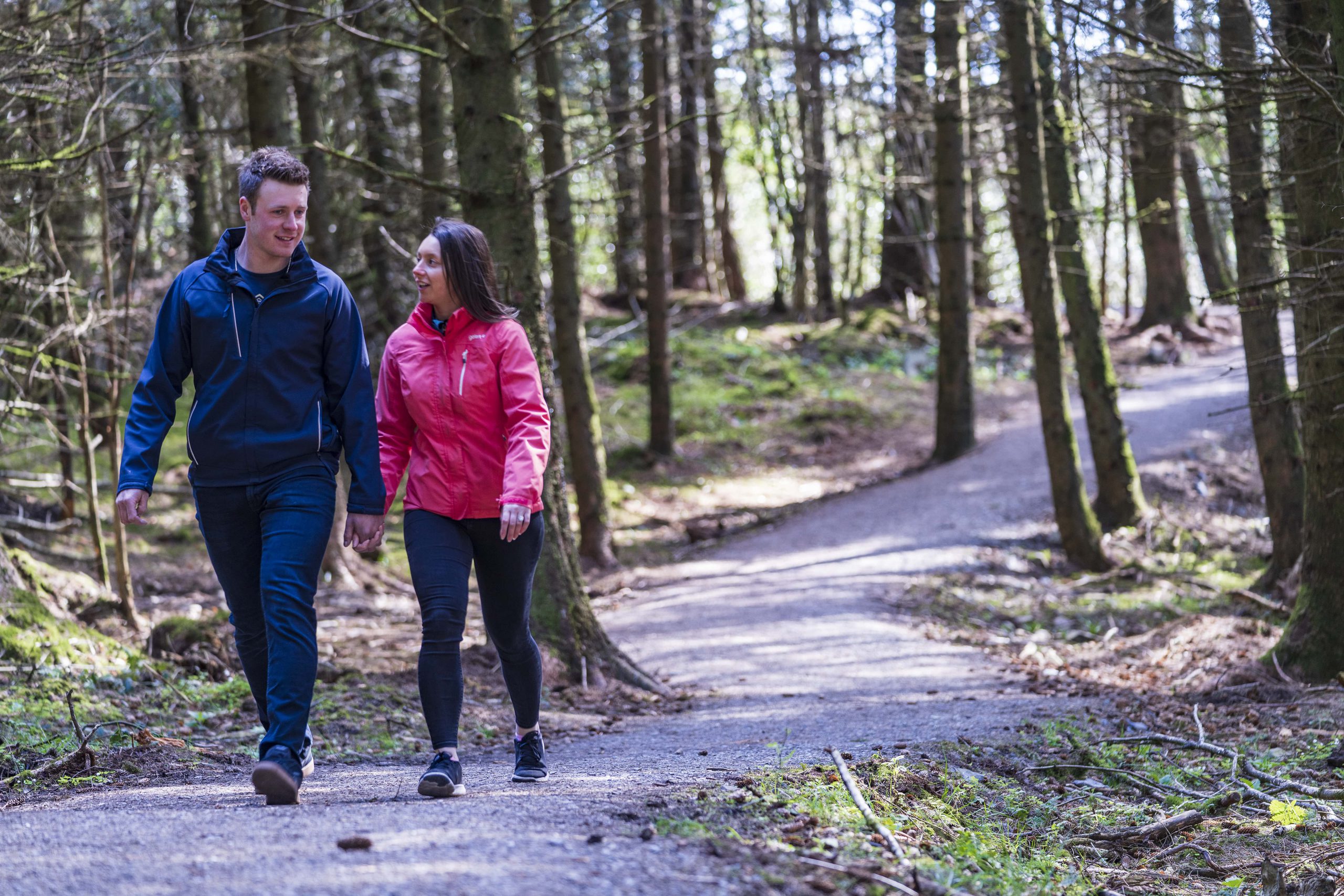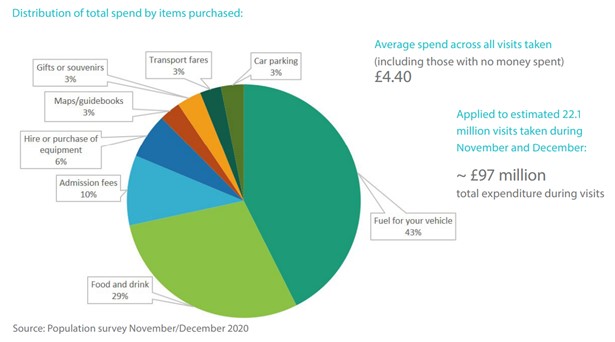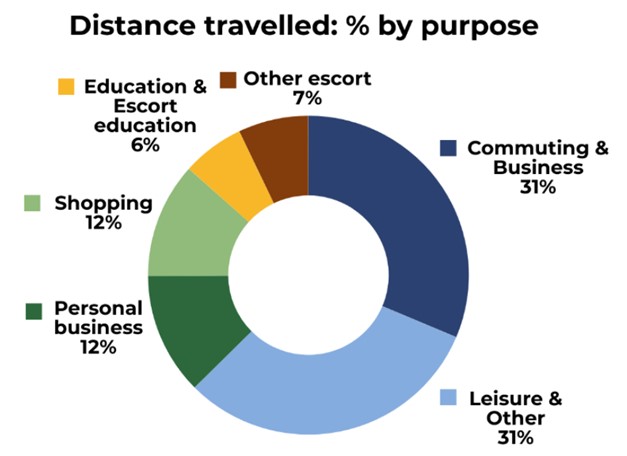
Reducing the need to travel for the simple pleasure of a walk
2nd June 2021Investing in community trails as a key component of a green recovery Â
The recent, Outdoor Recreation: People, Nature and Health research report highlighted an estimated 22 million visits were taken to the outdoors during November and December 2020. This generated a spend of £97 million, however a significant £41.71 million (43%) was spent on ‘fuel for your vehicle.’
That a lot of fuel, a lot of miles and a lot of emissions! This clearly highlights the need for investment in community trails as a key component of green recovery. Outscape’s Claire McLernon discusses how these doorstep opportunities can deliver.
———————
A Changing Landscape
As we plan for a future with COVID, it’s time to really start understanding and acknowledging the new way in which we all work, live, and play. Many people, most of Outscape’s own staff included, have largely moved their entire working lives home to the suburbs or to a previously rather impractical rural life away from the big urban centres. The new normal of high-speed broadband (mostly) and the freedom to work from a garden shed or a camper van if that’s your thing means we need to very quickly re-focus on how to provide a re-distributed working population with the things they need in the most sustainable way possible.
Fewer people are now commuting, freeing once congested and valuable road space for those key workers who still need to travel by car, and offering decision-makers newly available road space on a plate that should be considered for re-distribution in favour of sustainable and healthy modes of transport. This country cannot afford to re-appear out the other side of ‘recovery’ back exactly where we were pre-pandemic in that regard; A sustainable transport system is an essential ingredient for a resilient country’s future, irrespective of COVID.
Making the case for investment in things we need, closer to the places we live
Green Recovery strategists would be unwise in this new landscape to base their transport agenda on the assumption that commuting demands will return to a pre-pandemic ‘normal’, solely focusing on replacing one type of journey with another version of the same, e.g. the same car journey with a bus or a bicycle journey. For a start, this has always been unrealistic for many outside the critical mass of dense urban environments. No thanks to our troubled past, and now exacerbated by the pandemic, most people In Northern Ireland live a suburban or rural life in patterns that underpin many of our land use planning and transport efficiency woes across this wee part of the world. A truly sustainable mind will focus on planning a country where it’s not as necessary for people to travel as frequently and for such long distances to access to the everyday things they want and need, regardless of mode of travel. This is a basic guiding principle of responsible land use and transport planning.
As key workers and those of us confined to home at a desk seek solace in outdoor spaces in our droves (for evidence of this you can either read our research, or you can simply observe a Mourne Mountain car park at the weekend), we ask the question: How far do you have to travel for the simple pleasure of a walk?
Pre-COVID, the Department for Infrastructure and NISRA reported in their biennial Travel Survey that there were as many miles travelled for ‘leisure and other’ journeys as there were for ‘commuting and business’ (31% of the overall share each). Nb. ‘Leisure and other’ share does not include journeys for shopping or personal matters. It won’t be long until we see the output from a similar 2019-2021 survey, and the output from the recent Census, but we estimate that due to pandemic influences it’s possible that proportionally, the distance travelled for leisure purposes is likely to overtake that of any other reason for people to make journeys (the vast majority of which are by private car, by the way). Think about that – more miles could be travelled in this country for leisure purposes than for any other reason, even business and commuting.
While we acknowledge that ‘Leisure…’ does not just mean outdoor recreation (though during COVID when everything else was closed that is likely to have been the case), we believe there is a direct link between this statistic and something that Outscape has been passionately campaigning for, for many years: the need for improved local access to quality outdoor recreation experiences in the form of Community Trails.
Why should we have to travel such long distances just to go for a walk?
In a country where there is not enough local access for something as simple as a walk away from roads and traffic, we continue to place excessive demands on our existing green spaces – spaces that typically require a significant journey in a private car to get there.
Car use is not just an environmental issue (CO2 and fossil fuels, big car parks, congestion). There is an associated socio-economic inequity over lack of access to opportunities for outdoor recreation relating to lack of car ownership, a reality that is much greater than many privileged people in this country can even imagine. 33% of households in the Belfast City Council area, and 25% in Derry City and Strabane District Council area, do not have any access to a car. Even in the most rural of council areas, one in every ten households has no access to a car. This trend is set to continue as the next generation seeks the *choice* (gasp) to forego car ownership in favour of more sustainable options such as car share schemes, more family car sharing, public transport, or active travel.
We need more Community Trails
Community trails provide doorstep opportunities within easy walking distance, they connect communities to their green space(s) and to each other. More community trails = a more active and healthy society appreciating the outdoors closer to home, therefore more sustainably and more equitably.
Whether these are trails for walking or cycling or both we need more local spaces where people can get outdoors and get their heads showered and their bodies moving after a tough day without having to travel long distances to do so. If these spaces can incidentally double as corridors for utility journeys such as walking to school, shops, and more, then all the better. If they can be coupled with any future land use policy opportunities for enhancing our natural environment, we’re onto a real winner.
The Development of Walking and Cycling Product is the Remit of Every Government Department
The public and political finger wags strongly towards the Department for Infrastructure to lead on strategising and delivering for Walking and Cycling. Granted, DfI’s Bicycle Strategy focuses on facilitating ‘everyday journeys’ and covers all kinds of cycling product from urban cycle lanes to rural greenways. The actual mechanism for delivery of these is a whole other matter…
We need strategies and delivery plans that focus on more than just active travel, and that consider the wider planning landscape COVID has critically altered. An important term that does what it says on the tin, ‘active travel’ risks pigeonholing the wider walking and cycling agenda into something that values walking and cycling ONLY when it generates modal shift i.e. it replaces a car journey with the same one done on foot or by bicycle.
What if the alternative of not requiring a journey at all, or less frequently or over shorter distances, was valued just as much? What if the 31% of distance travelled for ‘leisure or other’ (equivalent to commuting reported in 2019) could be even partially offset by providing more of the things people want and need, including somewhere to go for a walk, closer to the places they live?
Source:Â Travel Survey for Northern Ireland Headline Report 2017-2019 (infrastructure-ni.gov.uk)
Active Travel and outdoor recreation ‘projects’ are too often treated as separate entities, enabling the proverbial buck to be all too readily passed from one Government Department to another. Roads. Greenways. Trails. Cycle Lanes. Public Realm. These are all products that in some form have the potential to enable and enhance walking and cycling and continue developing a cultural shift across a generation. Each product will be focused on achieving specific objectives relevant to the priorities and obligations of the sponsoring Government Department – economy, health, environment, education, infrastructure, even justice. But who is really looking at the overall picture? Every Government Department’s interest in walking and cycling has significant attributes that contribute to achieving the others’ objectives.
Let’s make Community Trail development and all that comes along with it a really key focus of a green recovery, giving people the option of staying closer to home and perpetuating the positively changing attitudes and cultures towards walking and cycling across the spectrum of government objectives. Take the strain off our supporting road and other infrastructure by helping dissipate pressures on our overcrowded outdoor hotspots. Every single government department surely has some proportion of responsibility to contribute to one of the most important reasons we travel away from our homes: the simple pleasure of going for a walk.
Blog by:
Claire McLernon
Project Officer



